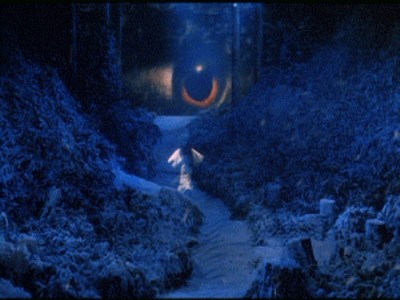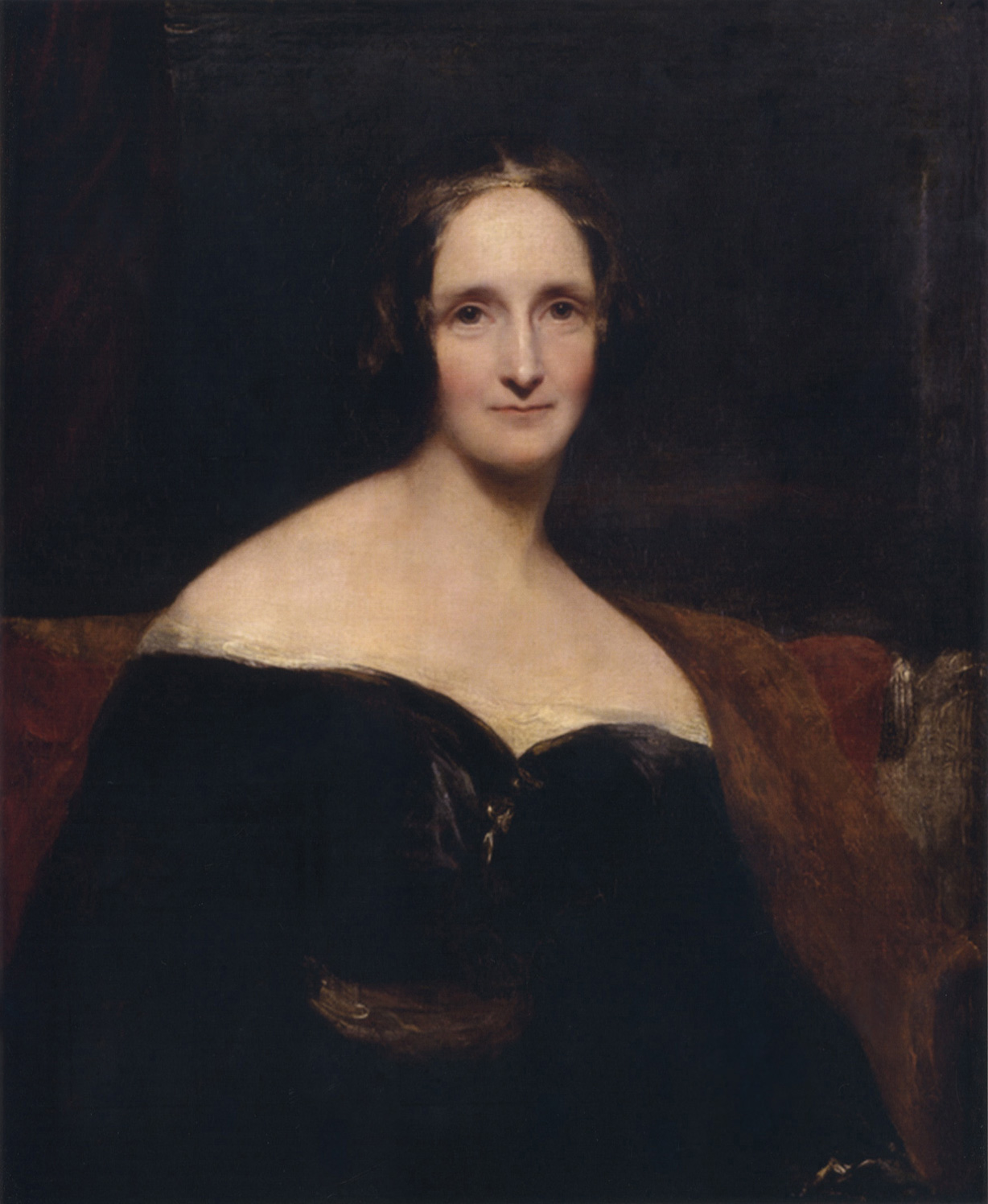


Modern times have changed the traditional Asian horror story. It seems that the ideals of good and evil being black and white and, the standard Gothic heroine have slipped into much of today's Asian film.
If you have seen an Asian horror film recently where an individual sets out alone to stop a monster that is incredibly violent, meets someone along the way that they have gratuitous sex with, discovers all the hidden facts about the monster, and ultimately vanquishes said monster by breaking some kind of rule that was set in place before they got there, then you have seen an "Asian" horror movie with a distinctly Western ideology.
Asian horror had its start in ghost stories inundated with Asian culture.
Some aspects of Asian horror that are not often seen in today's market are the importance of rules to society, the belief that the community is stronger than the individual, there is not always a hero, often more questions are raised than answered, there is no gratuitous sexual suggestions, the monsters are hungry for something, that something not usually being human flesh, and the supernatural is not always completely divided from the physical.
In traditional Asian ghost stories there are often a set of rules that must be followed and if they are broken the character meets a terrible fate. It does not matter how small the infringement on the rule is. This stems from the culture of honor that prevails through most Asian culture. The following of a set of specific rules will lead to not only a happy life, but a "correct" life that prospers those around you. Community is extremely important. The individual striking out on their own can be dangerous to everyone else and is discouraged. This is entirely unlike the Western tales of daring heroes striking out alone to pay the ultimate sacrifice in order to protect the rest of the forlorn folks hiding at home.
Following this line of thinking, there is not always a hero. In Western ghost stories, as well as other literature, there is usually a hero that is good and a bad guy that is bad, there is very little to no "grey" area. In Asian ghost stories, however, the "grey" just keeps coming, to the point that it is hard to settle with either the ghost, who often has been wronged in some way, or the human, who doesn't understand. Along with the "grey" comes many questions, "Where did the spirit come from?" "What do they want?" "Why did they spare this person?" Even questions like, "Why can the ghost have children with a human and does that mean she isn't really a ghost?" are rarely answered. But, Asian horror often leaves many blanks for the reader to peruse over.
In conclusion, traditional Asian horror is more concerned with psychology, whether it is of the ghost, the human, or the reader. It follows strict rules impressed upon it by the culture it came from and leaves a lasting impression of "Creepy".
The book Kwaidan: Stories and Studies of Strange Things
by: Lafcadio Hearn, is a good place to start in beginning to understand traditional Asian ghost stories. The book is mostly translated from old Japanese texts.


Required Book:
Haruki Murakami's A Wild Sheep Chase


In discussing Murakami's A Wild Sheep Chase I believe I will have to list some of the first things I noticed about the book as I read.
The main character is overtly passive and doesn't change much by the end, he is also disillusioned with life and the modern world in general. The "suspension of disbelief" happens frequently for out-of-the-blue reasons. The consumption of food and cigarettes is a constant detail. There seems to be a master plan at work in which our passive main character has become entangled.
The book is a ghost story. It follows traditional Japanese ghost stories in that the ghost is in a physical form, not a spirit. This is probably why I read through half the book not realizing who the ghost really was.
Another aspect of the Japanese ghost story used in the book would be the idea that the character is at odds with the modern world he's living in. This could be seen in how unhappy he is in his job and how he longs for the past and simpler times.
It seemed that the book explored the very frightening idea of having your life controlled by someone else without even knowing it. The main character was enraged at being used like a pawn in someone's game. However, this was the only part of the book that could be potentially frightening. This is because the ghost or the strange "Sheepman" that the main character meets are not frightening as much as they are foreboding of some greater force. In the case of this book that greater force was the mystical, powerhungry sheep itself.
While I read A Wild Sheep Chase the influence of western horror battled against my attempt to truly experiencing the book. I feel like I need to read the entire thing again from a different perspective.
In Western horror there is emphasis on building a belief in the spirit or monster. The focus is often centered around the main character trying to survive the threat. In Japanese horror the belief is already there. People believed the sheep existed taking over control of special humans, the "sheeped", to obtain its' desires. They accepted that the girlfriend with magical ears and the secretary had the sixth sense straight off. The focus seems to be more about the slow build of information and eeriness until the terrifying conclusion. Also, in A Wild Sheep Chase the main character is being blackmailed, but other than that his life is not in danger because of a monster breathing down his neck.
In Gothic literature the character is thrown into a dark and sinister unfamiliar world. In Japanese horror it could take place in someone's backyard. The difference here obviously is that it isn't realistic for the reader to find themselves in a dark castle infested with vampires, but they could certainly be walking home from the theater when a deranged person decides to attack. In some ways this makes Japanese horror more terrifying, because home may no longer be safe.
These differences are linked to culture. In Japanese ghost stories the ghosts were often ancestors or some other person once alive, now dead and hungry for vengeance. The reason for their monstrosity is not always physical, but psychological.
A great example of Japanese horror and how it differs from the majority of Western horror can be found in the movie A Tale of Two Sisters...
Required Movie:
(2003) director Kim Ji-woon's A Tale of Two Sisters


A Tale of Two Sisters builds up its' suspense all the way through to the big reveal of the family's dark secret, takes place in the home of the main character, and does not involve spirits, but instead centers on the terrifying twists the human mind can take.
The movie was very good in keeping its secrets. I figured out that there had to be some kind of split personality theme going on, but was not entirely sure who was truly disturbed until close to the reveal. The suspense and drama built up to highly crazed events, until it was obvious reality had slipped and that one of the two character's was causing it.
I personally thought the ending, after the big reveal of the mentally unstable character, was far more disturbing than the rest of the movie, because it was a flashback...
The movie spends most of its time building thrills centered around the crazy events happening in the here and now. This is similar to Western Horror, in that the young girl is trying desperately to protect herself and her sister from her crazy stepmother.
The ending describes why the insanity began. The reason is a human evil more powerful than anything depicted at the movie's start.
This is made all the more frightening due to the fact that all humans have these unsavory emotions inside them. Maybe not to the extent that the character in the movie does, but they are there. This means the fictional scenario could potentially happen on a very real level in your own home.
Required Movie 2:
(1999) director Takashi Miike's Audition


Director Miike's movie, Audition, is another "right in your own backyard" thriller. Any "perfect" woman out there could be another Asami waiting to trap you when you don't meet her impossible expectation of "Promise to only love me." It is like the Venus fly trap scenario, not all pretty flowers offer sweet nectar inside.
The movie suggests that the most innocent appearance can be deadly. This is a different idea from most Western horror films as well, since the monster is usually not in plain view or looks hideous. I say "usually" because there are a handful of beautiful, deadly vampires or beautiful, deadly aliens out there.
It seemed to me that the gore level was gratuitous. The torture scene was extremely affective with the idea of the needles and Asami's gleeful face. The piano cord sliding around Aoyama's ankle was an effective visual alone. I'm pretty sure anyone would have been able to tell what was coming next and would have been fine with a little less detail, but this is just an opinion...
Also, Aoyama's dream sequence where he seemed to pass out from pain and have a flashback was very confusing to me. Information he did not know beforehand was inserted into his hallucinations, like the man in the bag, and words were added to previous conversations. I suppose it could have been his imagination constructing the rest of the story...still, it didn't make sense. It was helpful to finally get some background on Asami, but it felt like it should have been revealed in a different manner.
In conclusion, in A Tale of Two Sisters and Audition the eventuality of a similar scenario happening in real life is mighty slim. Interestingly, A Wild Sheep Chase does not follow the "close to home" scenario, it actually throws the character out into a cold barren landscape similar to Gothic literature such as, Mary Shelley's Frankenstien. But, it should be noted that in all three examples the characters do not feel comfortable in their surroundings. They try to fix their undesirable situations and in most cases their attempt causes more conflict. Also, their dire conditions resulted out of very close relationships either held with family, friends, or significant others, while more often than not the Western villain is a stranger.







 The monster enraged by reading Frankenstein's papers and learning how Frankenstein came to create him.
The monster enraged by reading Frankenstein's papers and learning how Frankenstein came to create him.
